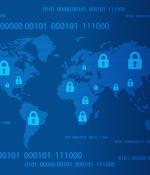Security News

More than 90 percent of CISOs rely on outdated, report-based threat intelligence that is often too old to inform decisions, according to Cybersixgill. The survey of 150 CISOs at firms with at least 10,000 employees or $1 billion in revenue was conducted by Global Surveyz in February and March 2021 to foster a better understanding of the state of threat intelligence, and the focus that today's companies are placing on these vital technologies.

Microchip Technology announced it has extended its FPGA family's security with the DesignShield development tool that further helps prevent this information from being extracted for malicious purposes. "As a leader in the security space, Microchip offers a portfolio featuring the latest countermeasures for reducing the risk of cloning, intellectual property theft, reverse engineering, or the insertion of malicious Trojan Horses," said Bruce Weyer, vice president of Microchip's FPGA business unit.

The council is set to meet virtually on a quarterly basis to maintain a continuous exchange of information on cyber threats and cybersecurity solutions. Which is why the Asia Pacific Public Sector Cyber Security Executive Council couldn't have come at a more critical time, where the stakeholders in the ecosystem can collaborate on prioritizing national cybersecurity defense.

The White House has confirmed today that JBS, the world's largest beef producer, was hit by a ransomware attack over the weekend coordinated by a group likely from Russia. JBS only hinted that a ransomware group caused the incident on Monday, stating that "The company's backup servers were not affected, and it is actively working with an Incident Response firm to restore its systems as soon as possible."

Group-IB has officially announced the opening of its Middle East & Africa Threat Intelligence & Research Center in Dubai. Group-IB's leadership views the opening of its MEA Threat Intelligence & Research Center as a critical milestone toward achieving the strategic goal of building the first ever decentralized global cybersecurity company with fully operational R&D centers in the key financial hubs.

Access to Mexico's Lotería Nacional and Pronósticos lottery websites are now blocked to IP addresses outside of Mexico after a ransomware gang threatened to perform denial of service attacks. Lotería Nacional is the government-run national lottery system of Mexico, operating under Mexico's Ministry of Finance.

Considering recent announcements of major attacks caused by external malicious actors, including a ransomware attack on a U.S. gasoline pipeline, the need for increased security posture is as important as ever, and multilayered security remains the key. President Joe Biden signed an executive order this week that includes initiatives aimed at improving the nation's cybersecurity; across the Atlantic, a recent report by the U.K.'s National Cyber Security Centre shows how the U.K. is ramping up its cybersecurity defense measures.

Delivered through an elegant single pane of glass and deployed in a matter of hours, IntSights' External Threat Protection Suite provides enterprise-grade external threat intelligence and IOC management capabilities enabling security teams to defend against a rapidly evolving threat landscape while significantly reducing their workload. Centralizing the collection, management, and integration of dozens of threat intelligence sources in the same platform, security teams can streamline investigation and proactively block threats with IntSights' built-in TIP capabilities. "The enhancements we continue to make to the IntSights ETP allow these teams to significantly streamline threat investigations and proactively block threats from within their connected security devices. Our mission is to empower every organization with threat intelligence, and you just can't utilize TI successfully without built-in TIP capabilities."

NetWitness introduced NetWitness Cloud SIEM, a cloud-based threat detection and response solution that delivers pervasive visibility, multi-faceted analytics, and automated response capabilities without the need for on-premise deployment and administration. NetWitness Cloud SIEM provides enterprises with the same rich log management, retention, reporting, and analytics services long utilized by on-premise customers for threat detection and response, but in cloud form.

ZeroFOX announced the release of the largest App Library enabling security teams to streamline their response to external threats through effective threat intelligence enrichment, alert orchestration and incident remediation. Enterprise security teams can easily engage with hundreds of platforms including Elastic, Swimlane, D3 Security and Maltego within the ZeroFOX Platform.